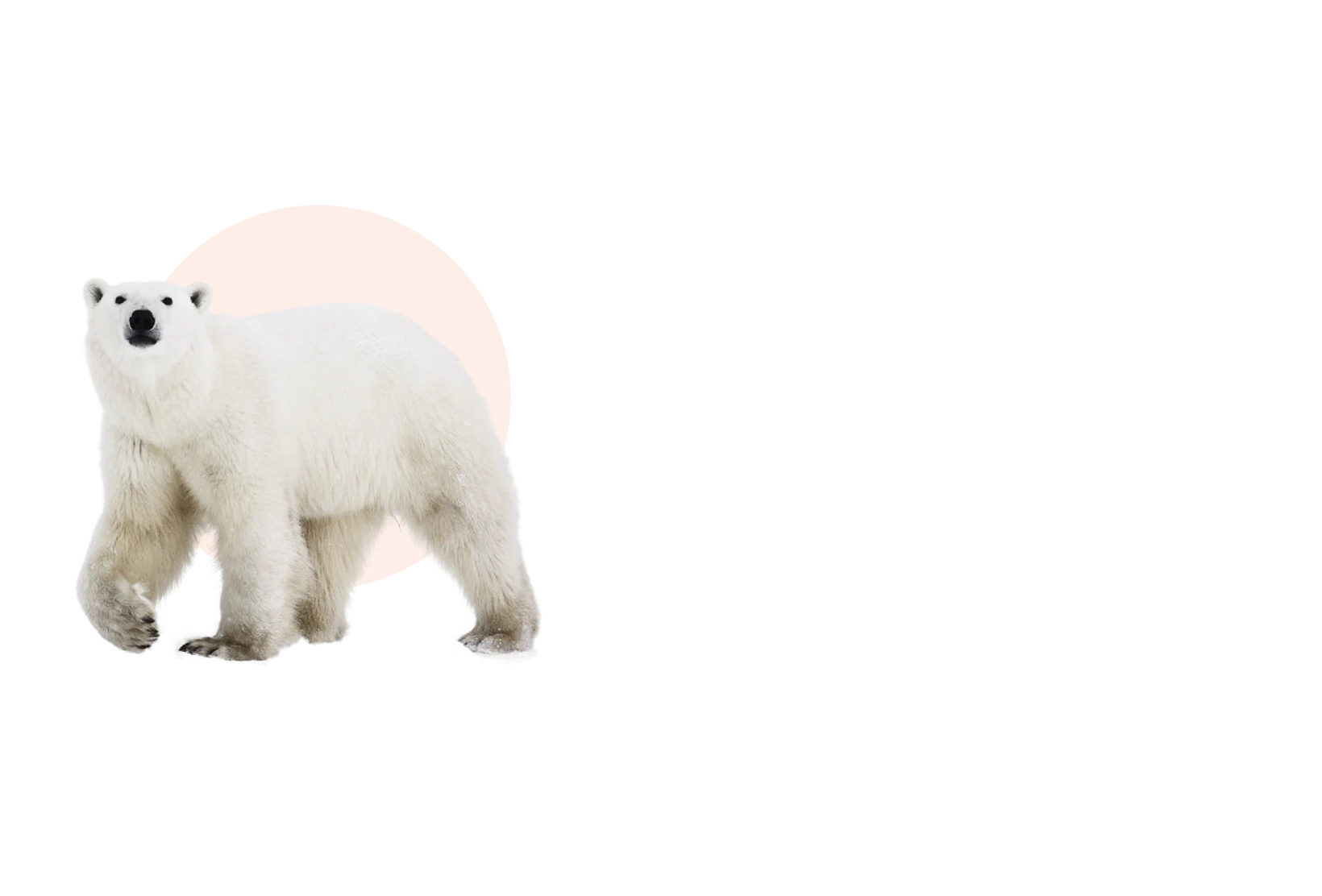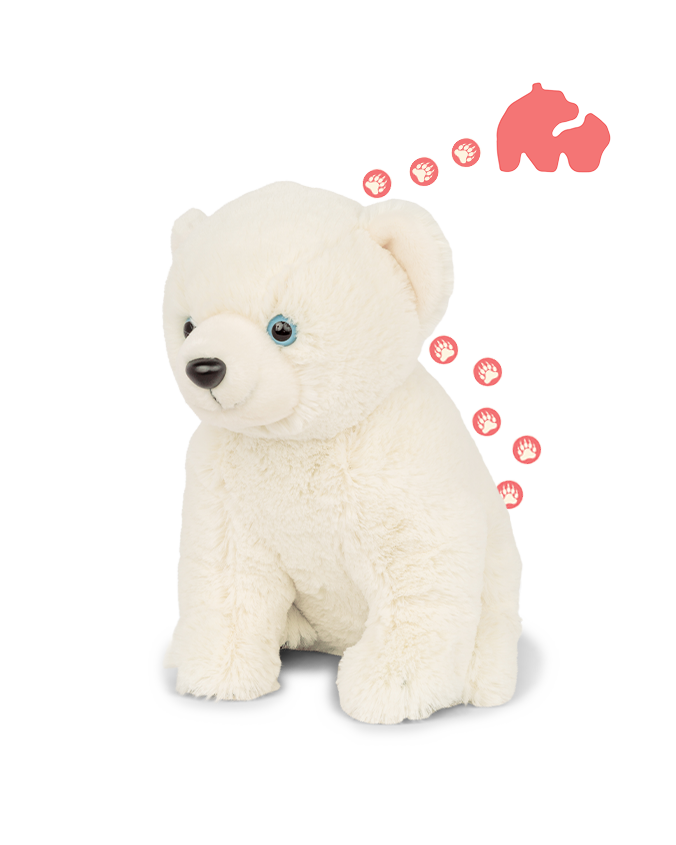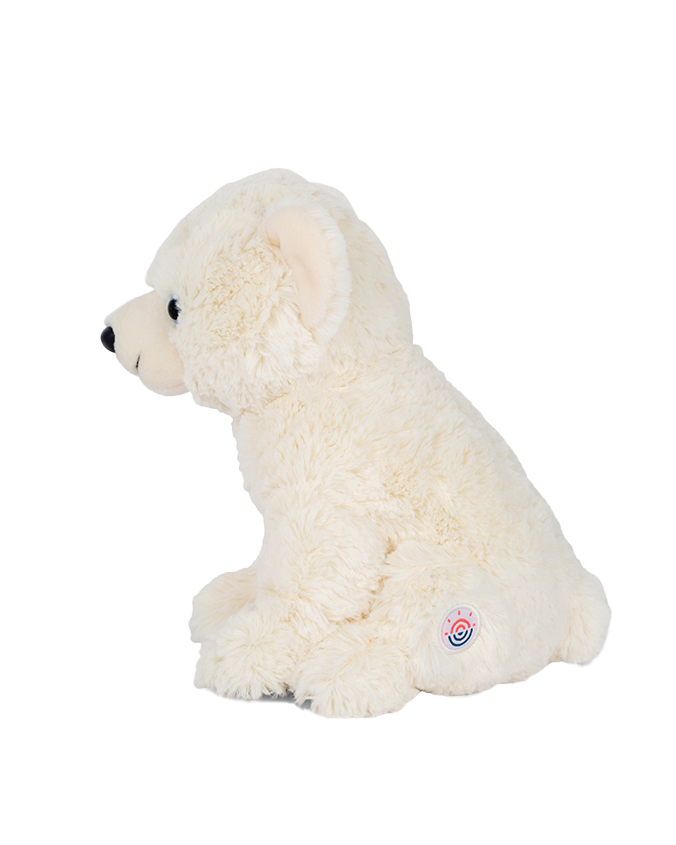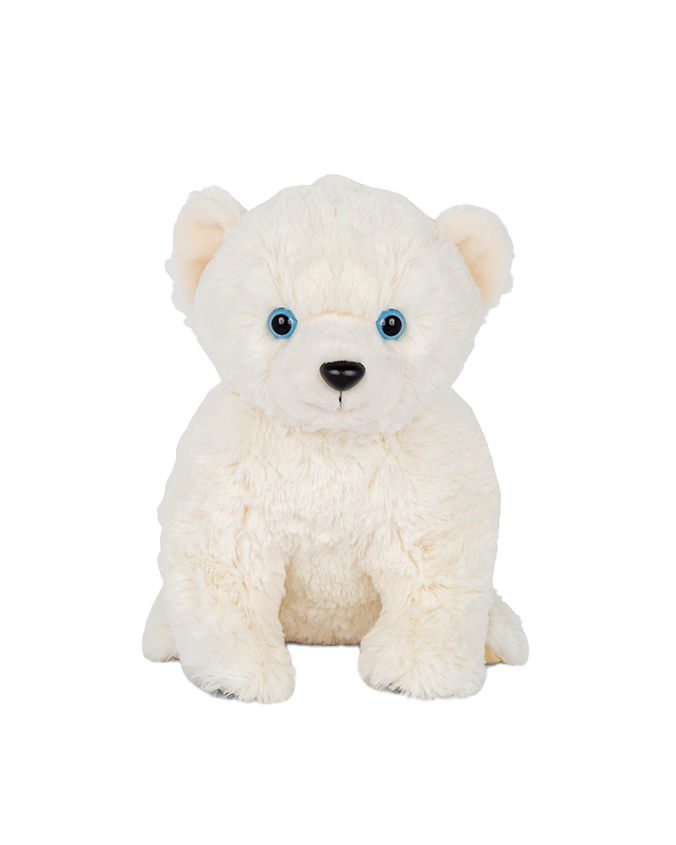Meet your polar bear and learn their story
Fahlo | The Venture Polar Bear | Plush
* Fahlo® donates 10% of profits to our nonprofit partners
* Stuffing made from recycled water bottles
* Huggable for all ages
* Size: 12"
Every Fahlo® tracking experience includes the Fahlo Protection Ping™. This indicates each animal’s unique path may be live, delayed, or historical based on required safety protocol in accordance with our nonprofit partners.
While the experience of following an animal’s journey remains the same for you, we work behind the scenes with our partners to ensure it is presented in a way that keeps the animals safe, one step or splash at a time.

Each plush comes with a real polar bear to track
Reveal exclusive stats, photos, and updates along the way
Follow their journey on a 3D tracking map
In partnership with Polar Bears International

Common questions
Can you track a polar bear?
Yes, you can track a polar bear! Historically, this has been done primarily using GPS collars made from flexible, synthetic materials that can withstand Arctic marine conditions. These GPS collars contain a battery and transmitter that sends location data to a satellite that allows researchers to track polar bears, helping them learn about their movements in response to sea ice movement as well as loss caused by climate change. Because polar bears prefer to roam far out on sea ice where it is dangerous for humans to travel, data from GPS collars gives scientists a rare glimpse into the lives of polar bears, including the habitats they use and the vast distances they travel. The collars also feature a release mechanism set to detach the collar before the battery dies. Additionally, the steel nuts and brass bolts used to attach the collar will corrode in saltwater, ensuring the collar falls off even if the release mechanism fails. Once detached, researchers can use GPS to locate and retrieve the collar, extract stored data, and then refurbish and reuse the collar. To learn more about how polar bears are tracked when you purchase a polar bear stuffed animal, check out Polar Bears International.
Why are polar bears endangered?
Polar bears are classified as a vulnerable species, with their main threat being the loss of their sea ice habitat due to climate change. As the ice melts, polar bears are forced to travel greater distances to find food, which puts additional stress on their populations. Other significant threats include industrial impacts, pollution, overharvesting, and increased interactions with humans as they search for food. These combined factors have resulted in a decline in polar bear populations, making their conservation a critical concern for scientists and wildlife advocates alike. Our stuffed polar bear is one way to make a positive impact and support the work of Polar Bears International as they continue to make a difference in protecting this amazing species.
Does tracking harm the polar bears?
Understandably, there are concerns about the impacts of collaring and human interference on wildlife. Polar bear researchers care deeply about the health of their study animals and regularly assess the impacts of different types of research and adjust as needed.
The most recent study on the long-term impacts of collars on polar bears evaluated the extent to which capture, collaring, and handling may influence polar bear activity, body mass, body condition, reproduction, and survival. Polar bears had a reduction in movements for several days after capture, but this was short-term. There were no long-term effects found on body condition, reproduction, or cub survival. This study showed capture and collaring are not contributing to observed changes in body condition, reproduction or survival seen in the polar bear population.
However, researchers continue to refine methods, make trackers smaller, and find the least invasive ways to study polar bear populations to help inform the best ways we can protect them.
Learn more about why researchers track polar bear, from our partners at Polar Bears International.
How long do polar bears live?
Polar bears have a lifespan of approximately 15 to 18 years in the wild. The lifespan of a polar bear can be influenced by factors such as food availability, environmental conditions, and threats from predators or humans. In captivity, polar bears can live longer due to the absence of predators and regular veterinary care, with some bears living into their mid-30s. However, it's important to note that polar bears face many challenges in the wild that can affect their lifespan, such as climate change impacting their habitat and food sources.
What would happen if polar bears went extinct?
If polar bears went extinct, it would be a clear sign that the Arctic ecosystem is in grave trouble. Polar bears are apex predators, and their presence is crucial for maintaining the balance of the Arctic food web. The loss of these majestic creatures would also have significant cultural impacts on Indigenous communities that have close ties to the polar bear. By supporting organizations like Polar Bears International and purchasing a stuffed polar bear, you are taking a step towards preventing this tragic outcome and contributing to the conservation efforts that are vital for the survival of polar bears.
Why are polar bears white?
Polar bear fur appears white because it reflects visible light, giving it a snowy appearance that blends in with their Arctic environment. Interestingly, the fur itself is not actually white. Each hair is transparent and hollow, which not only contributes to the white appearance but also helps insulate the bears against the cold by trapping air.
How do I clean my polar bear plush?
Wipe with damp sponge or cloth, using warm water and mild soap. Once dry, brush to restore the plush and proceed with snuggling.
You may also love
SHOP MORE + EARN MORE
YOUR LIFESTYLE REWARDED
Dine/Shop
Enjoy a fabulous meal at any of over 600+ participating locations or stop by one of the retail shops at the properties.
Earn
Present your membership card to your server and earn 1 point for every $1 spent on eligible food, beverage, retail, and online & in-store gift card purchases at any participating location.
Redeem Rewards
When 250 points are earned, they are converted into a $25 REWARD. A max of $300 in rewards may be earned per check.











